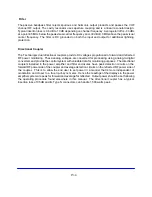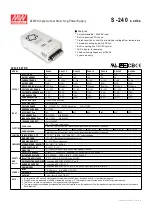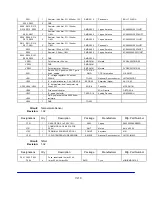
VI-2
monitored by U101 to U105, buffered by U106 to U108, and sent to the analog to digital converter
integrated into the microcontroller. There are five circuits for which the current is monitored by this
system.
As the DC supply passes through the user interface module, it undergoes filtering to ensure that
the supply to the pallets is as clean as possible. Each of the five circuits passes through a network
of transient voltage suppressors, capacitors, and inductors. Each connection is also fused at the
input to insure an over-current condition does not persist. The fuses are a replaceable mini blade
type fuse with a 42V voltage rating, and a current rating depending on application.
Coupler Conditioning Module
The coupler conditioning module serves to monitor the output of the directional coupler which
provides a voltage proportional to the foreword and reflected power at the output of the transmitter.
The coupler conditioning module also interfaces with each of the other boards in the control
system, acting as the hub of communications for the system. Lastly, the coupler conditioning board
sends and receives signals through the remote access port, via the TxNET board.
The analog signals produced by the coupler for forward and reflected power are passed onto the
coupler conditioning module by connectors J206 and J207 respectively. Each signal is filtered by
CLC networks, and buffered and amplified by the op-amp U214. The level of the forward signal
can be adjusted by VR201, and the reflected signal by VR202. These two potentiometers can be
used to fine tune the power readings of the transmitter if they go out of calibration. The analog
signals are converted to digital by an analog-to-digital converter integrated into the microcontroller
U202.
Aside from taking readings from the coupler, the microcontroller on the coupler conditioning
module also interfaces with the RF conditioning module (through J201A) and the temperature
sensor (through J201B). The microcontroller interfaces with the CAN bus using U203 and U204.
Through the CAN bus, the coupler conditioning board is able to communicate with the user
interface module, and any other amplifiers that are in the system. The CAN bus is connected
through J201C, and J201D if there are multiple amplifiers in the transmitter system.
The last task of the coupler conditioning board is to send and receive remote access signals to and
from the TxNET board. Two analog outputs, proportional to forward and reflected power and
produced by the digital-to-analog converter U212 after it receives input from the microcontroller.
The analog outputs are then buffered by U211 before being sent through J203 to the TxNET
board. J203, along with J204, also bring the digital inputs and outputs from the TxNET board to the
coupler conditioning module. The digital signals are then connected to the microcontroller through
the opto-isolators U205, U206, U207, U208, and U209.
















































